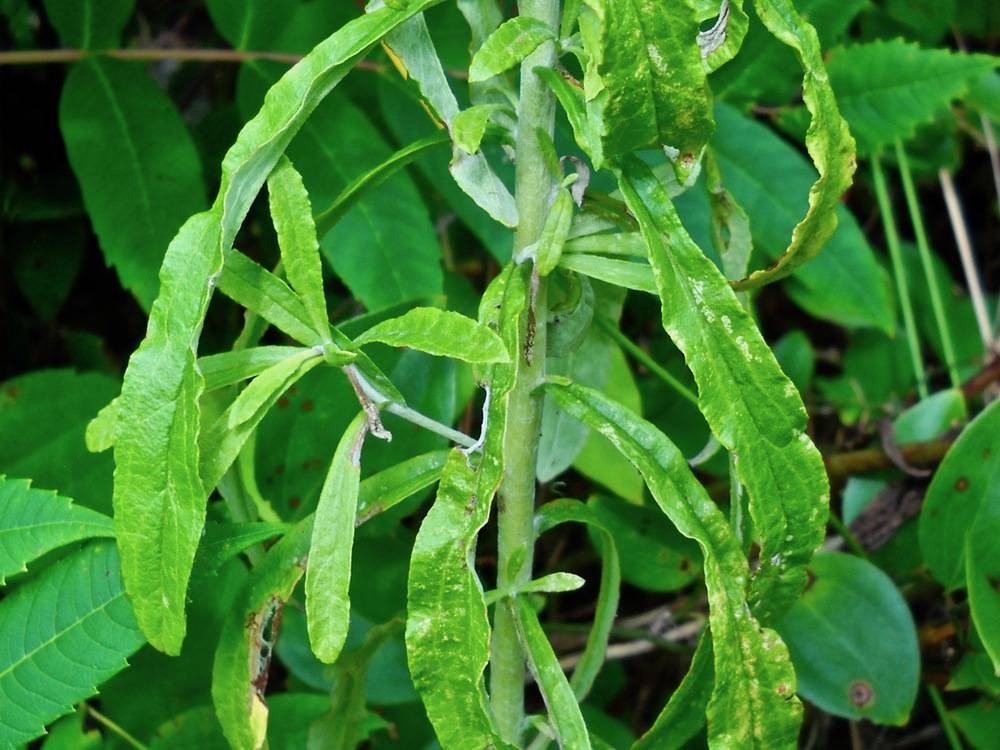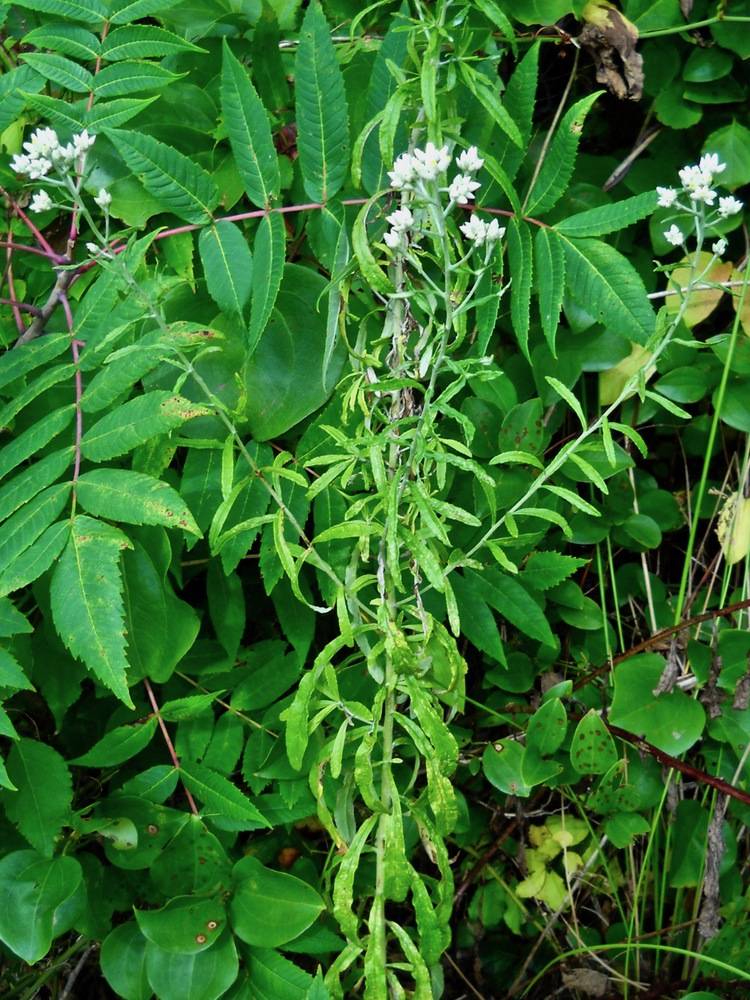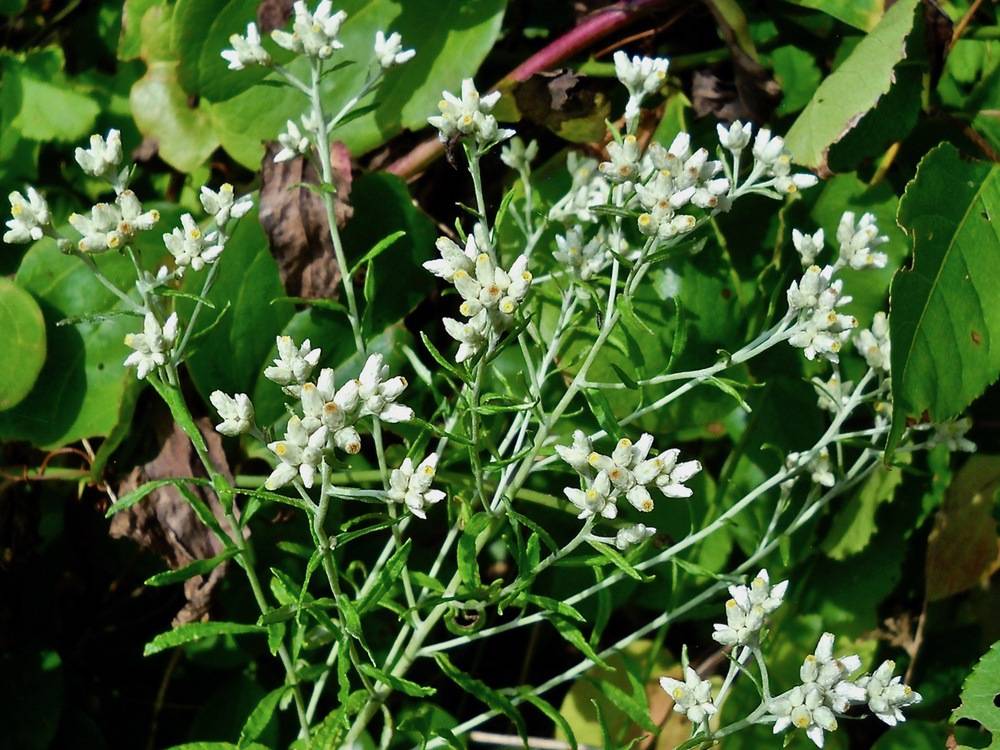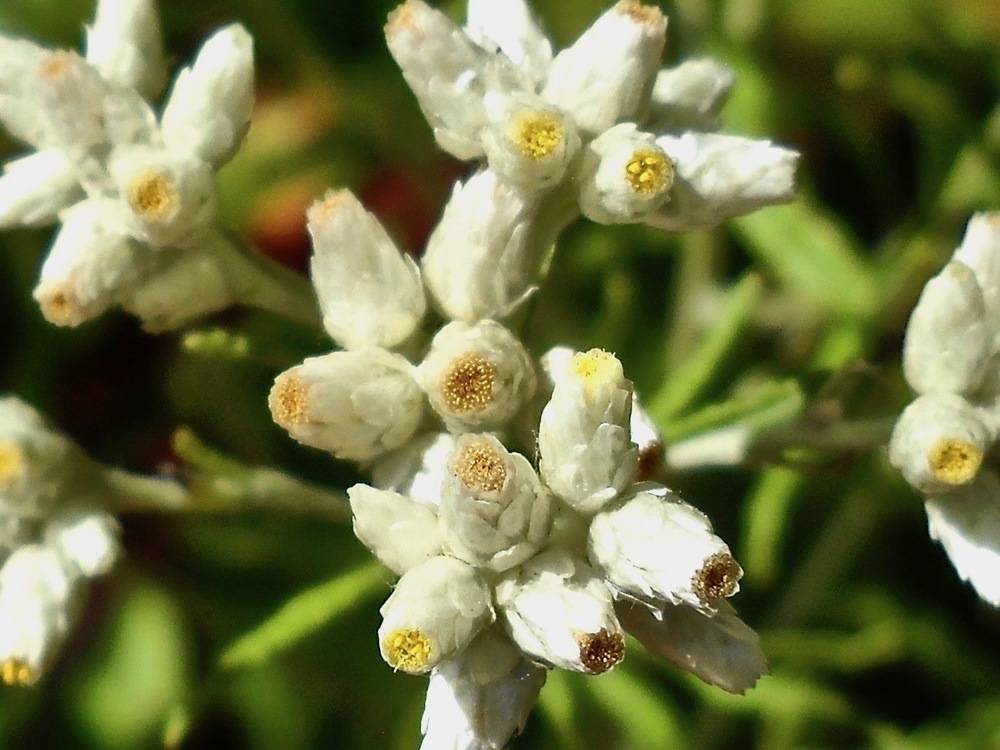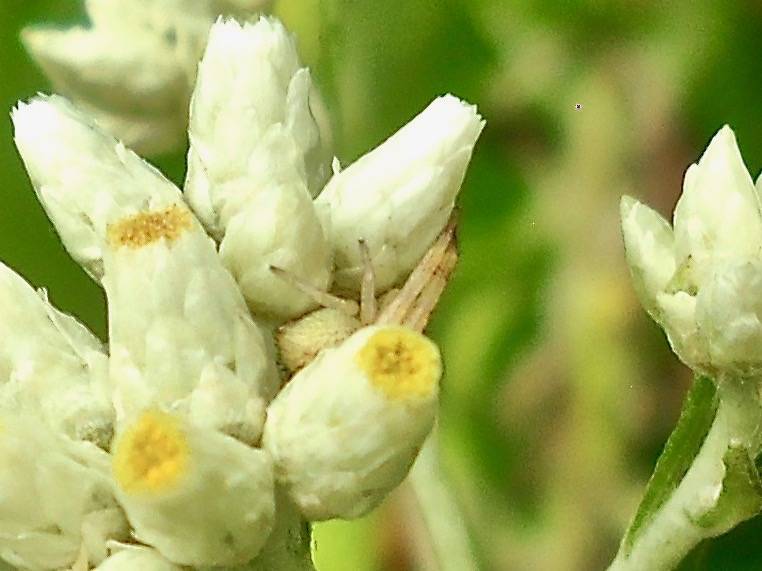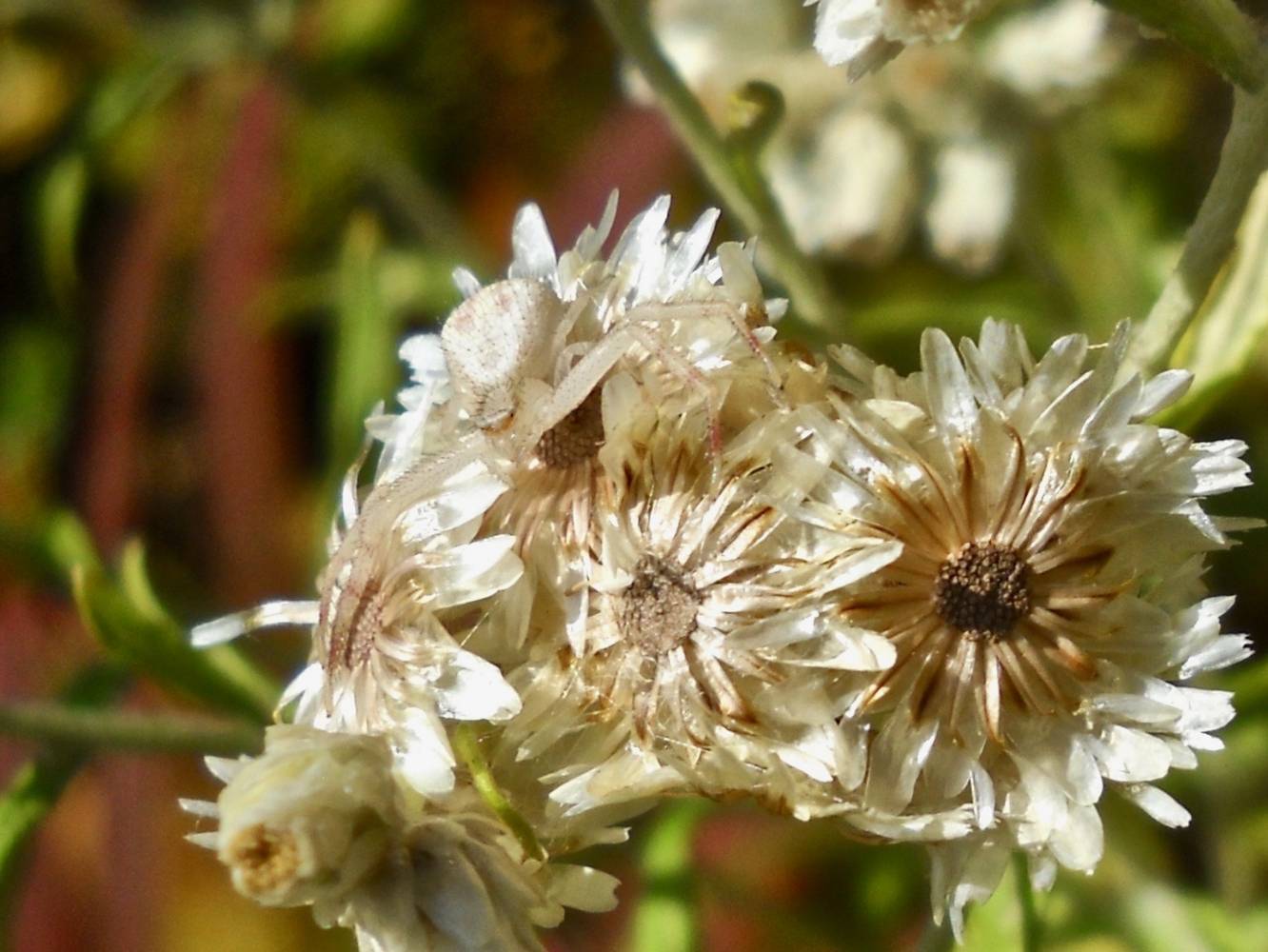blunt-leaved rabbit-tobacco
The blunt-leaved rabbit-tobacco is an annual forb that grows in sandy and open habitats and is native to eastern North America. At first sight, its flower heads look nothing like those of other more familiar species in the family Asteraceae (e.g. aster, chrysanthemum, daisy, dandelion, goldenrod, sunflower). However, a closer look reveals that like all members of the family, its floral structure is complex and consists of many tiny tubular florets that are bundled by bracts into flower heads.
It is not abundant at Salter Grove. Only a few plants grow along the Marsh Trail at the edge of shrubby vegetation above the high tide line.
The yellow to brown disk florets in the conical flower head open for a month from late summer until early fall. The presence of camouflaged crab spiders among the flower heads suggests a steady stream of small insect visitors. A single seed forms within each tubular floret. The papery cream-colored bracts spread apart as the single-seeded fruits expand within each floret. The bracts fall off to expose the tufts of hair attached to the bullet-shaped seeds. A brisk wind will spread the seeds far and wide.
Native Americans made decoctions to treat an impressive list of ailments including asthma, colds, coughs, fevers, insomnia, lung pain, nervousness, sore throats, and vomiting. Infusions were applied to relieve muscle cramps and twitching. The astringent leaves were chewed and smoked just for fun but were also used to alleviate sores in the mouth and throat region. Dried leaves were steamed as an inhalant to treat headaches and foolishness. Smoke from smudging the leaves was used to evict ghosts from an area, and to revive those who have fainted or are unconscious. The early settlers readily adapted some of the medicinal applications.
For more information:
https://gobotany.nativeplanttrust.org/species/pseudognaphalium/obtusifolium/
https://www.illinoiswildflowers.info/prairie/plantx/sw_everlasting.htm
https://www.minnesotawildflowers.info/flower/sweet-everlasting
https://anps.org/2016/11/17/know-your-natives-sweet-everlasting/
https://en.wikipedia.org/wiki/Pseudognaphalium_obtusifolium
Coon, N. (1979). Using Plants for Healing. Rodale Press. p. 115.
Millspaugh, C.F. (1974). American Medicinal Plants. Dover Publications, Inc. pp. 351-353. (Original work published in 1892)

